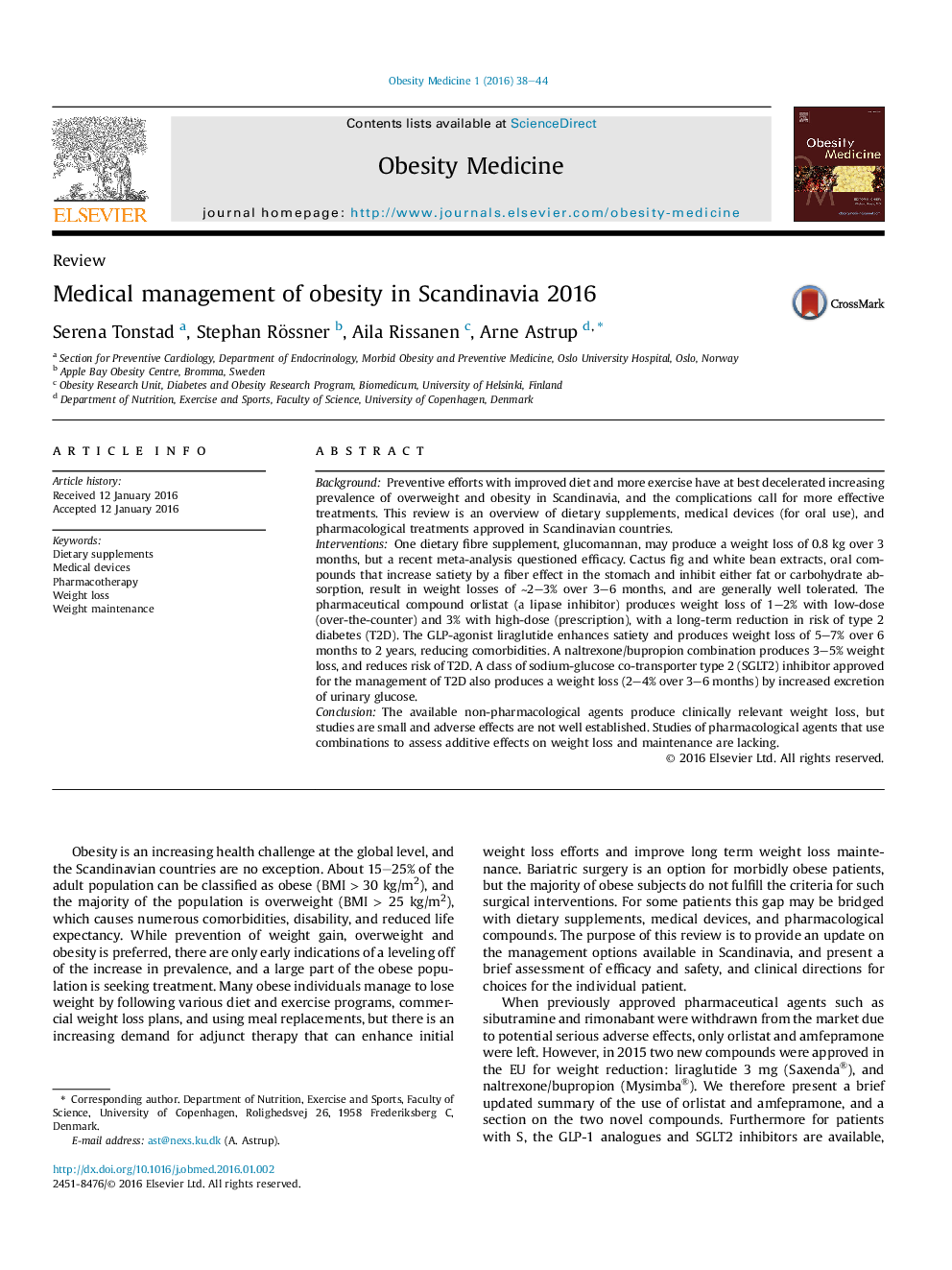| Article ID | Journal | Published Year | Pages | File Type |
|---|---|---|---|---|
| 1097079 | Obesity Medicine | 2016 | 7 Pages |
BackgroundPreventive efforts with improved diet and more exercise have at best decelerated increasing prevalence of overweight and obesity in Scandinavia, and the complications call for more effective treatments. This review is an overview of dietary supplements, medical devices (for oral use), and pharmacological treatments approved in Scandinavian countries.InterventionsOne dietary fibre supplement, glucomannan, may produce a weight loss of 0.8 kg over 3 months, but a recent meta-analysis questioned efficacy. Cactus fig and white bean extracts, oral compounds that increase satiety by a fiber effect in the stomach and inhibit either fat or carbohydrate absorption, result in weight losses of ∼2–3% over 3–6 months, and are generally well tolerated. The pharmaceutical compound orlistat (a lipase inhibitor) produces weight loss of 1–2% with low-dose (over-the-counter) and 3% with high-dose (prescription), with a long-term reduction in risk of type 2 diabetes (T2D). The GLP-agonist liraglutide enhances satiety and produces weight loss of 5–7% over 6 months to 2 years, reducing comorbidities. A naltrexone/bupropion combination produces 3–5% weight loss, and reduces risk of T2D. A class of sodium-glucose co-transporter type 2 (SGLT2) inhibitor approved for the management of T2D also produces a weight loss (2–4% over 3–6 months) by increased excretion of urinary glucose.ConclusionThe available non-pharmacological agents produce clinically relevant weight loss, but studies are small and adverse effects are not well established. Studies of pharmacological agents that use combinations to assess additive effects on weight loss and maintenance are lacking.
